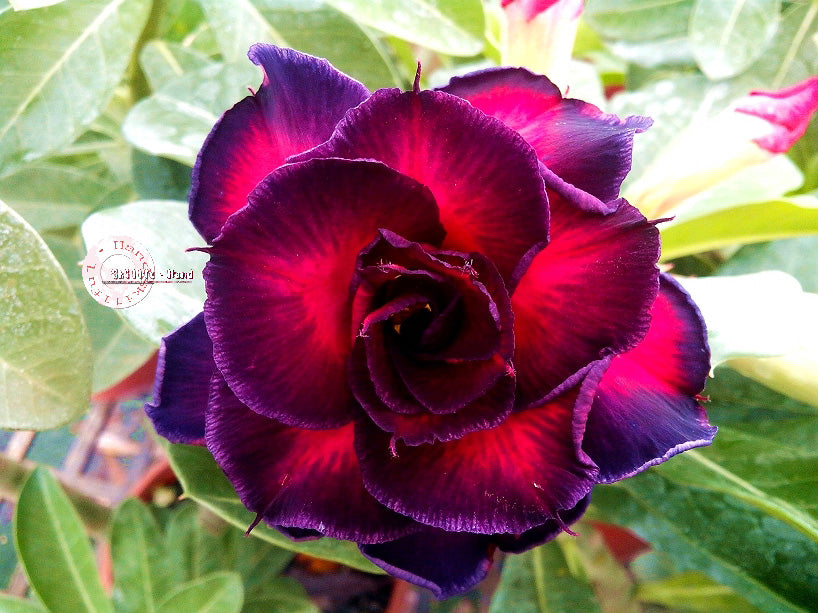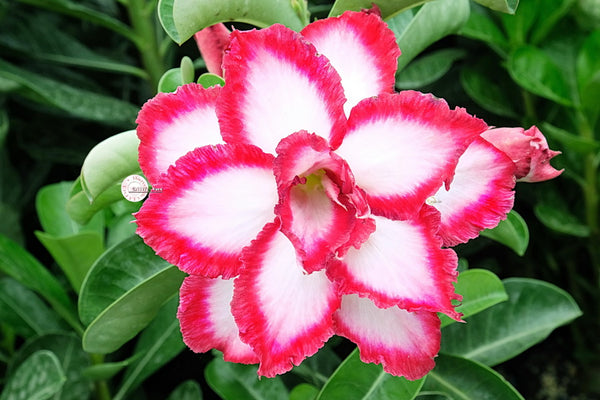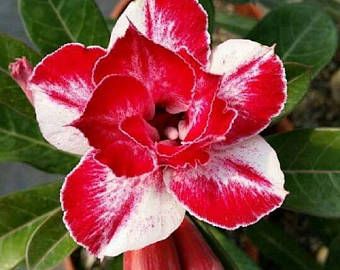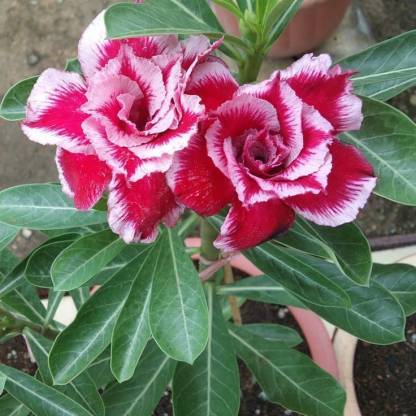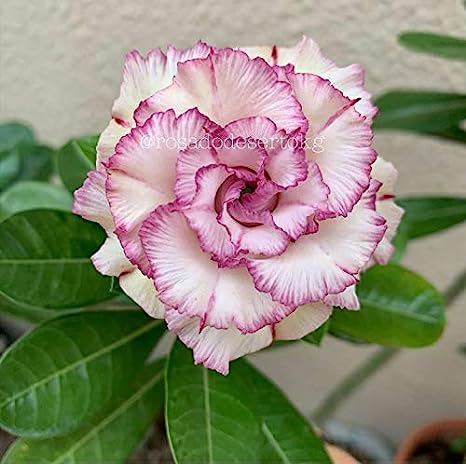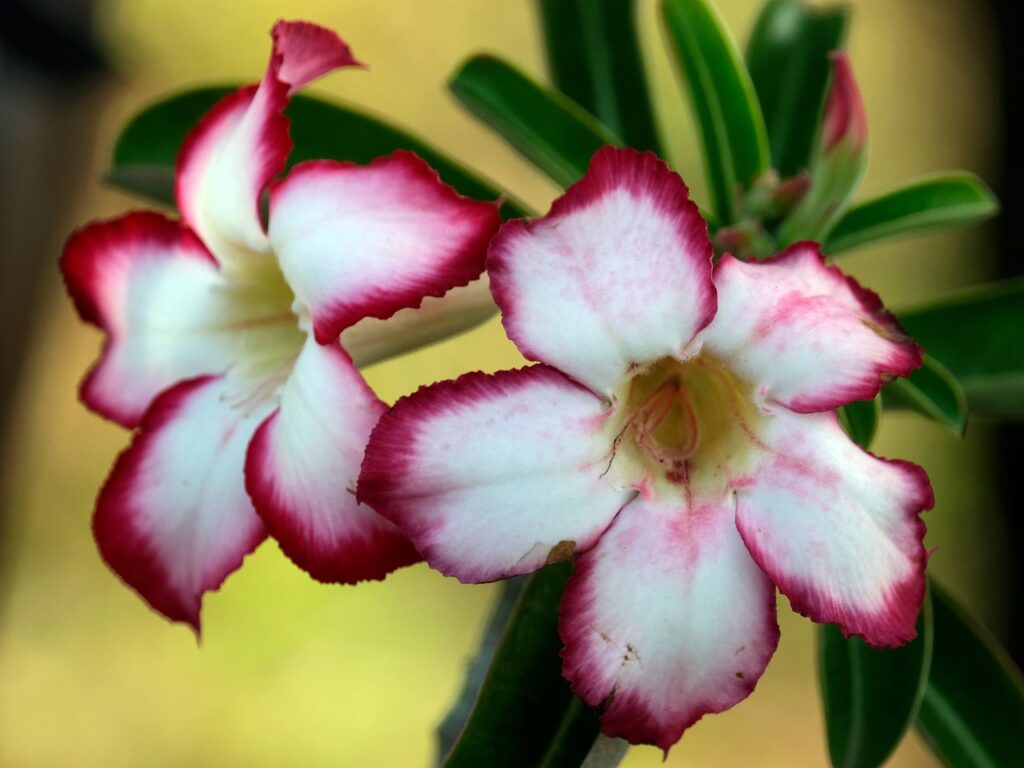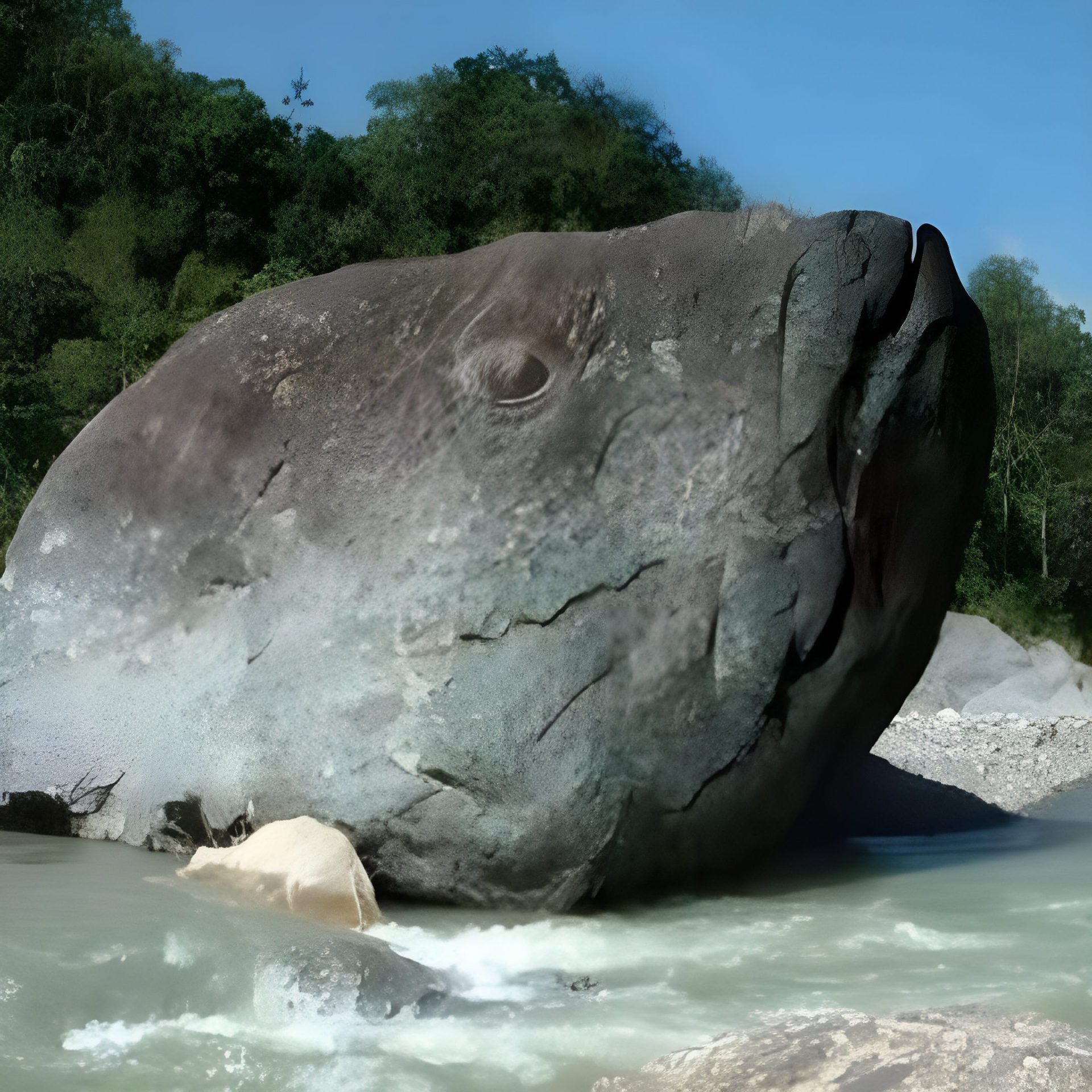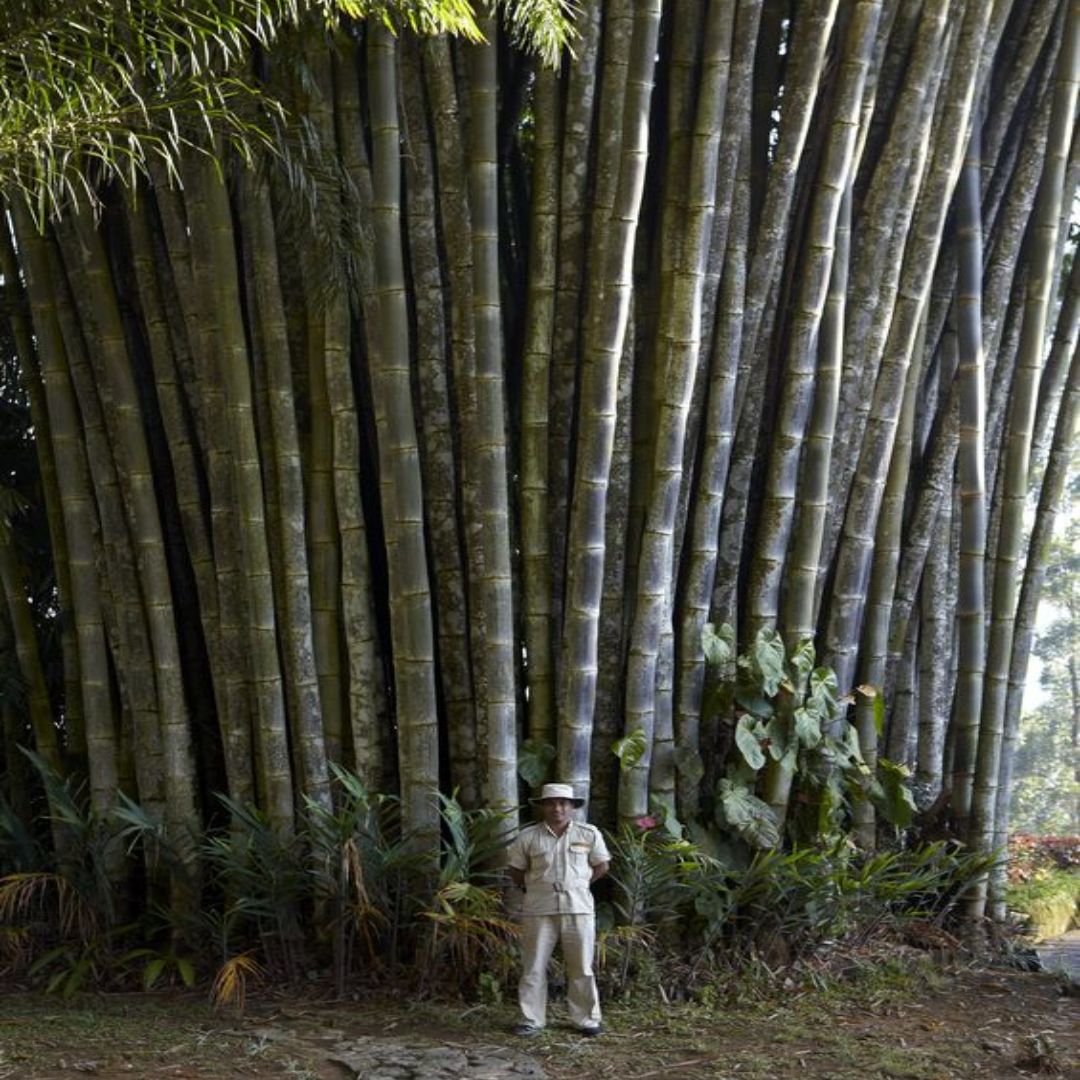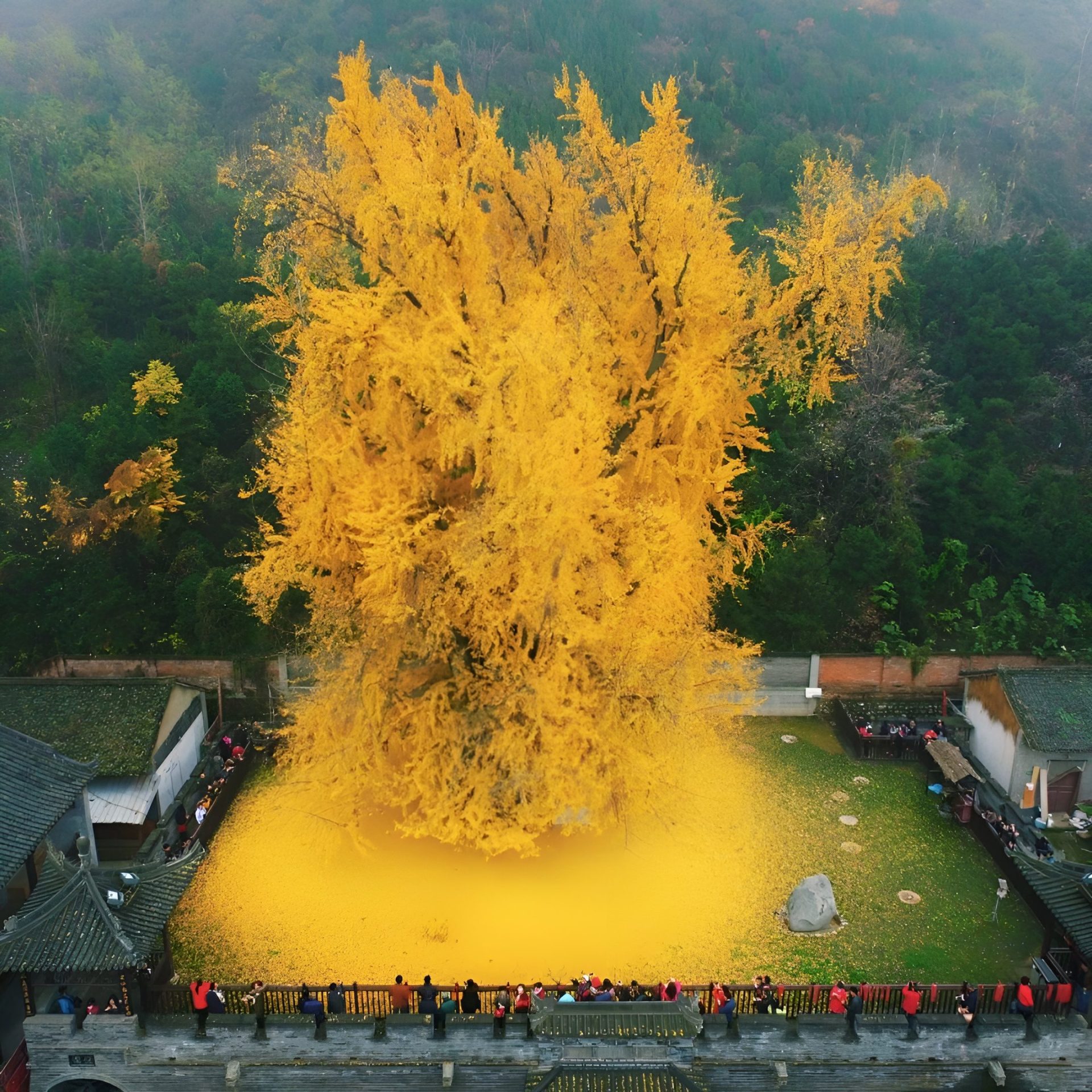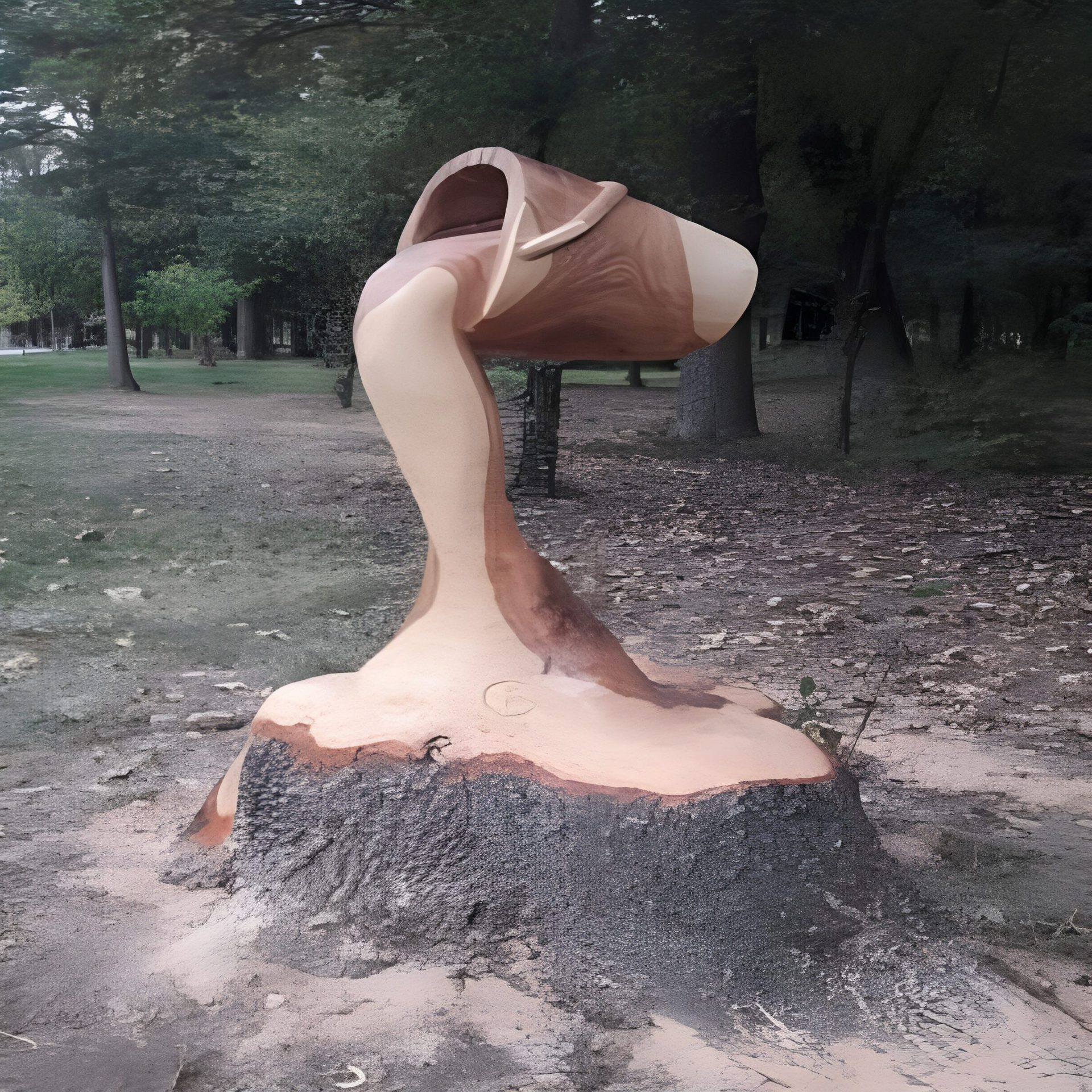Caring for a desert rose plant is easy, but it does require some finesse. Like other succulent plants, it needs careful water management and lots of sunlight.
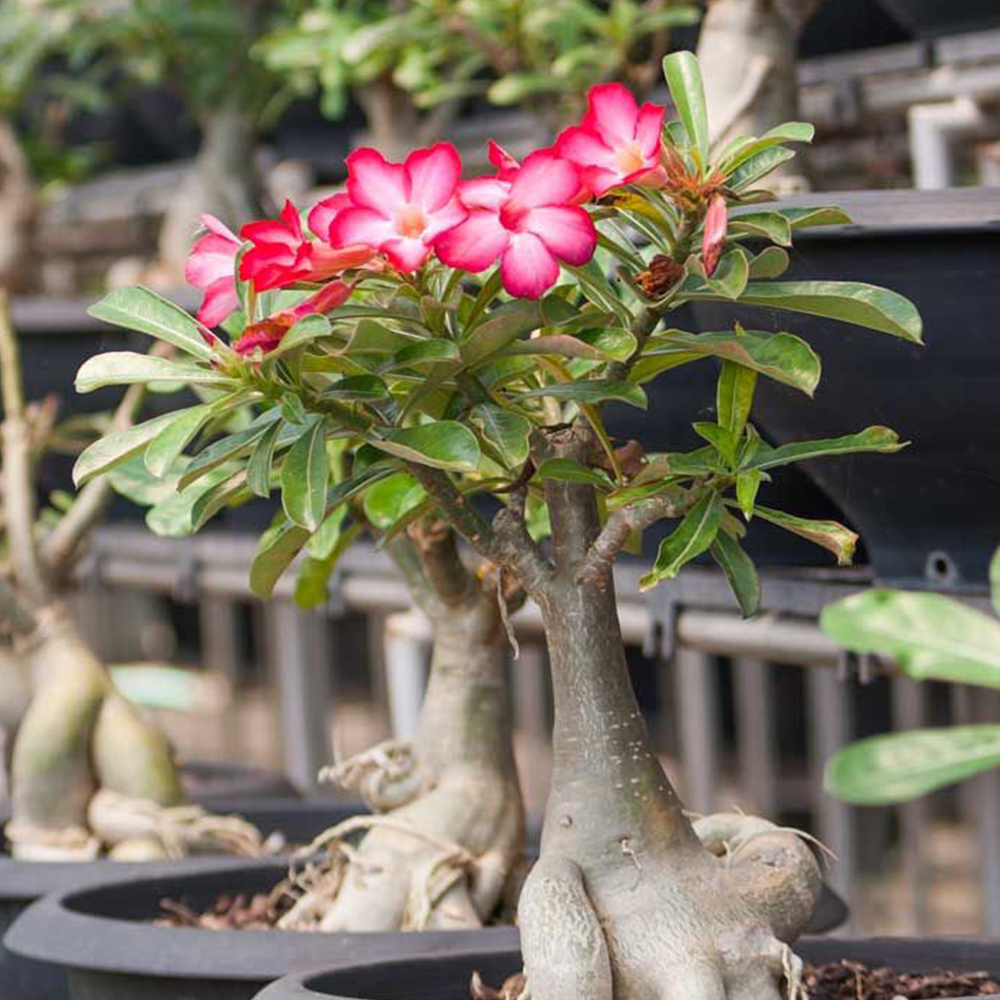
The plant also prefers consistently warm temperatures, which is why it is grown as an indoor plant in many parts of the United States (except USDA zones 11 and 12). The plant usually blooms in the summer months, bursting with vibrant pink, pink or red flowers and bright green leaves. When it becomes dormant during the winter season, it loses its flowers and foliage.
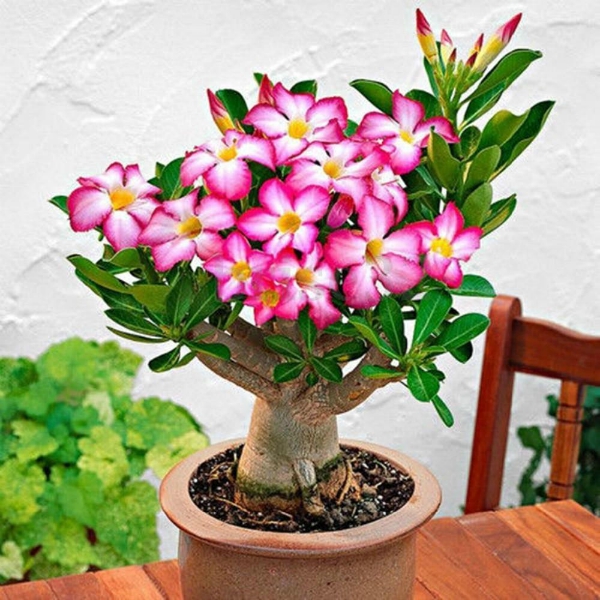
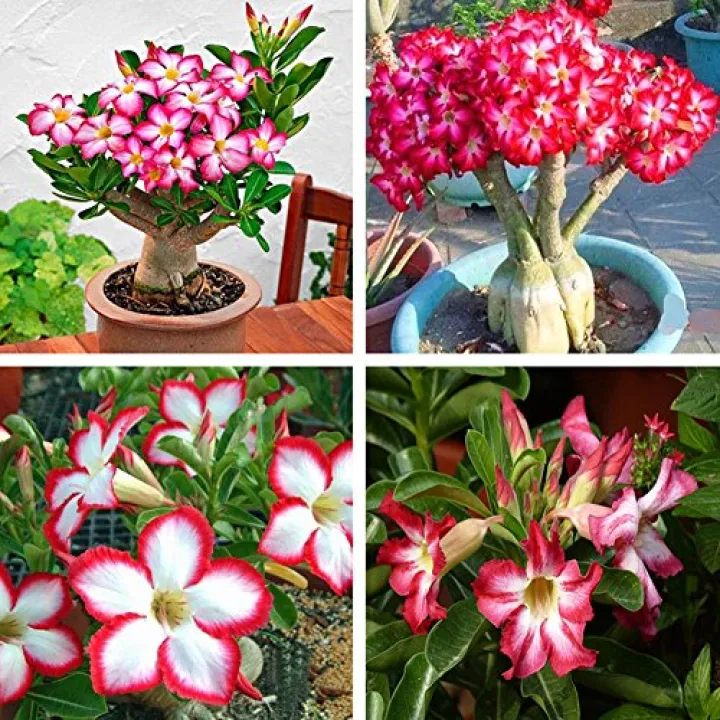
Desert rose plant with deep and light pink flowers close-upThe Spruce / Adrienne LegaultDesert rose plant with deep and pale pink flowers hanging on the end of the stem with leaves close-upDesert rose plant with thick succulent stem with small stones filling the top of the potLightThe desert rose thrives in an environment with full sun. Choose a location in your home so that the plant receives plenty of light throughout the day, such as a bright south-facing windowsill or sunroom. If you live in an area where it can be grown successfully outdoors, the best place to plant the desert rose is in a location that is not shaded by taller plants but has some protection from the midday sun, which can burn the plant’s leaves.
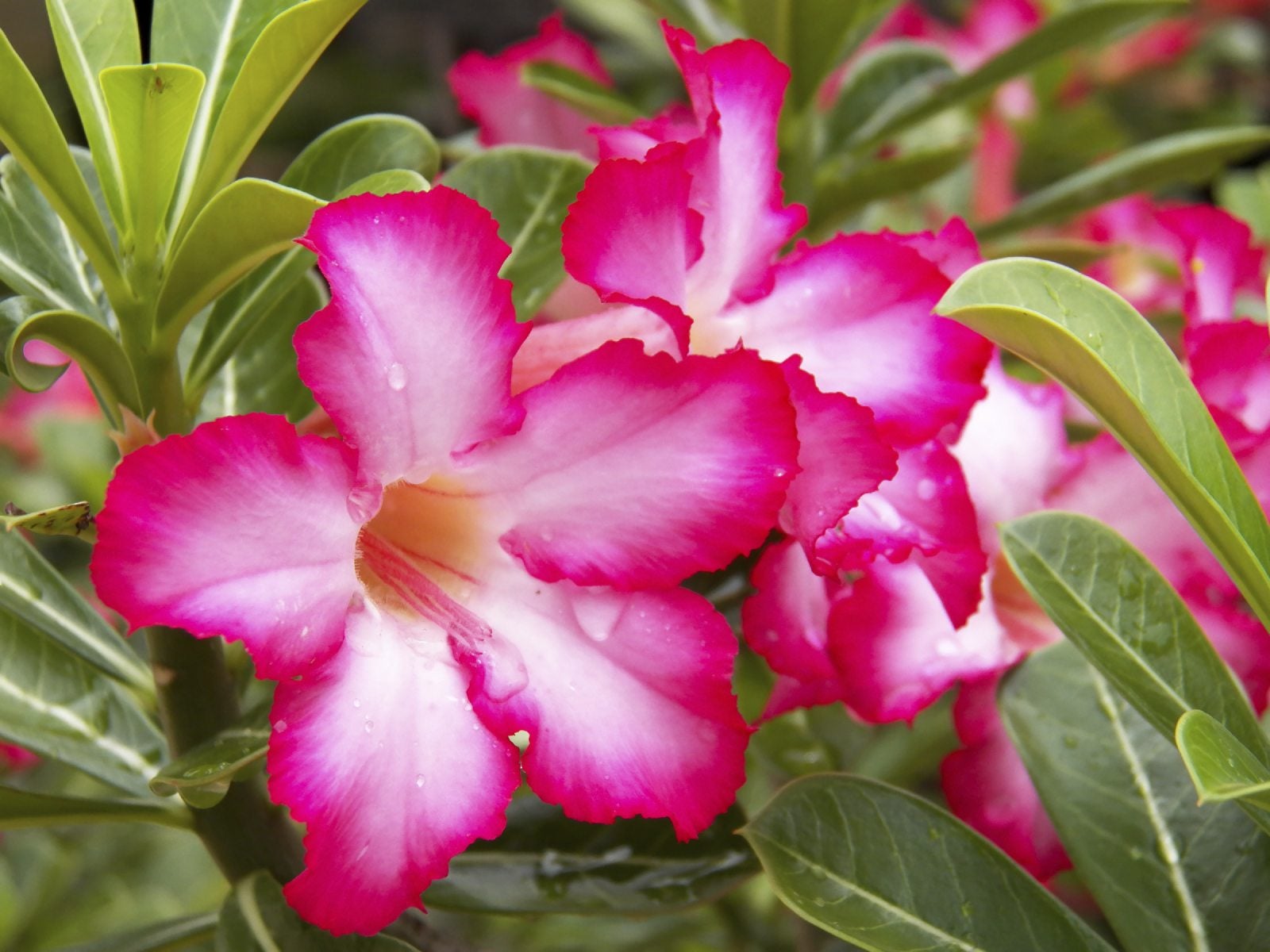
SoilAs the name suggests, the desert rose plant is acclimated to naturally dry, desert-like conditions, meaning well-draining sandy or gravelly cactus soil. The soil should have a neutral to acidic pH, preferably hovering around 6.0.

WaterThe desert rose plant has varying water needs depending on the season and temperature. During the growing season (late spring and summer), keep the soil moist but never saturated. Check the soil periodically and allow it to dry completely before watering. Also, plant your desert rose in a container that has plenty of drainage holes. The desert rose can be susceptible to rotting if it gets too wet (a clay or terracotta pot can also help carry away excess moisture).
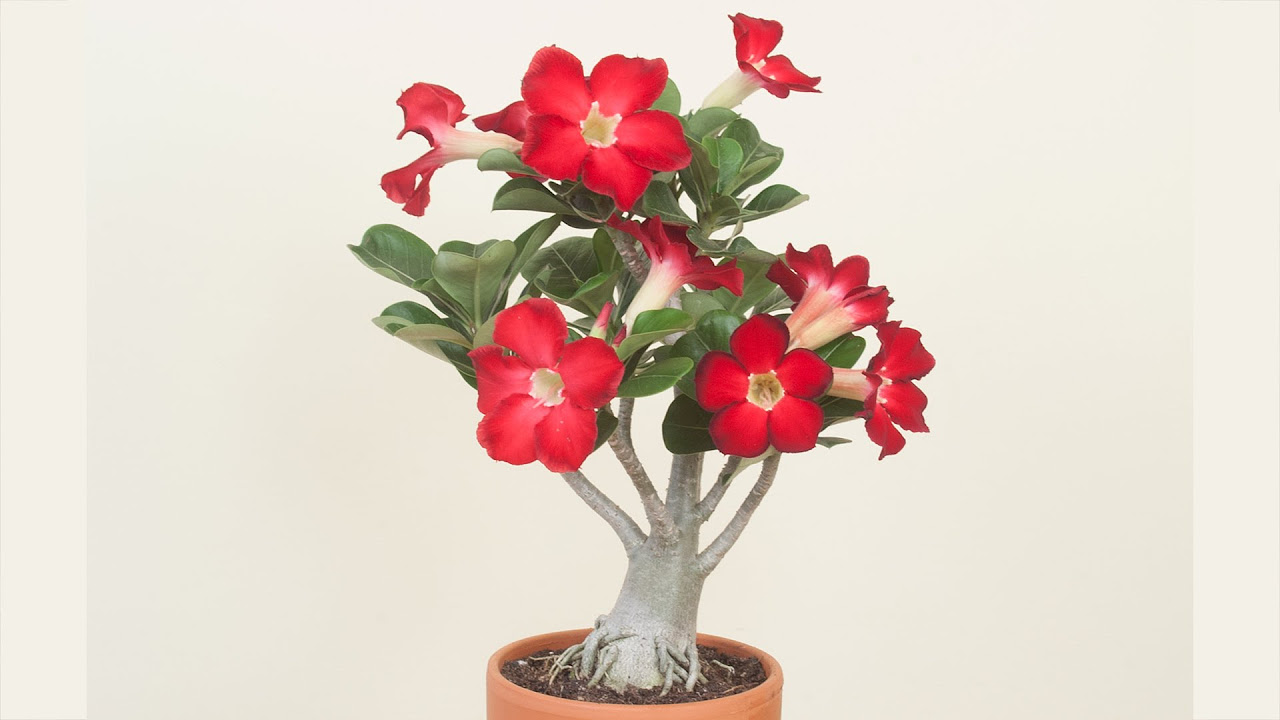
During the fall and winter (when the plant usually goes dormant in the wild); drastically reduce moisture, watering only minimally once a month or so. If you’re curious about whether your plant is getting enough water during its growing season, you can look at the stem for the answer. A swollen, thick stem (in proportion to the size of your plant) is a good indication that your plant is well hydrated.
Temperature and humidityKeep your plant in warm temperatures at all times – it will die quickly if exposed to prolonged temperatures colder than 50 degrees Fahrenheit. It thrives best at temperatures between 65 and 90 degrees Fahrenheit. If you’ve planted your desert rose outdoors, it likely won’t survive any extended frost. Humidity is not important to the desert rose because it is used to a dry, hot climate.
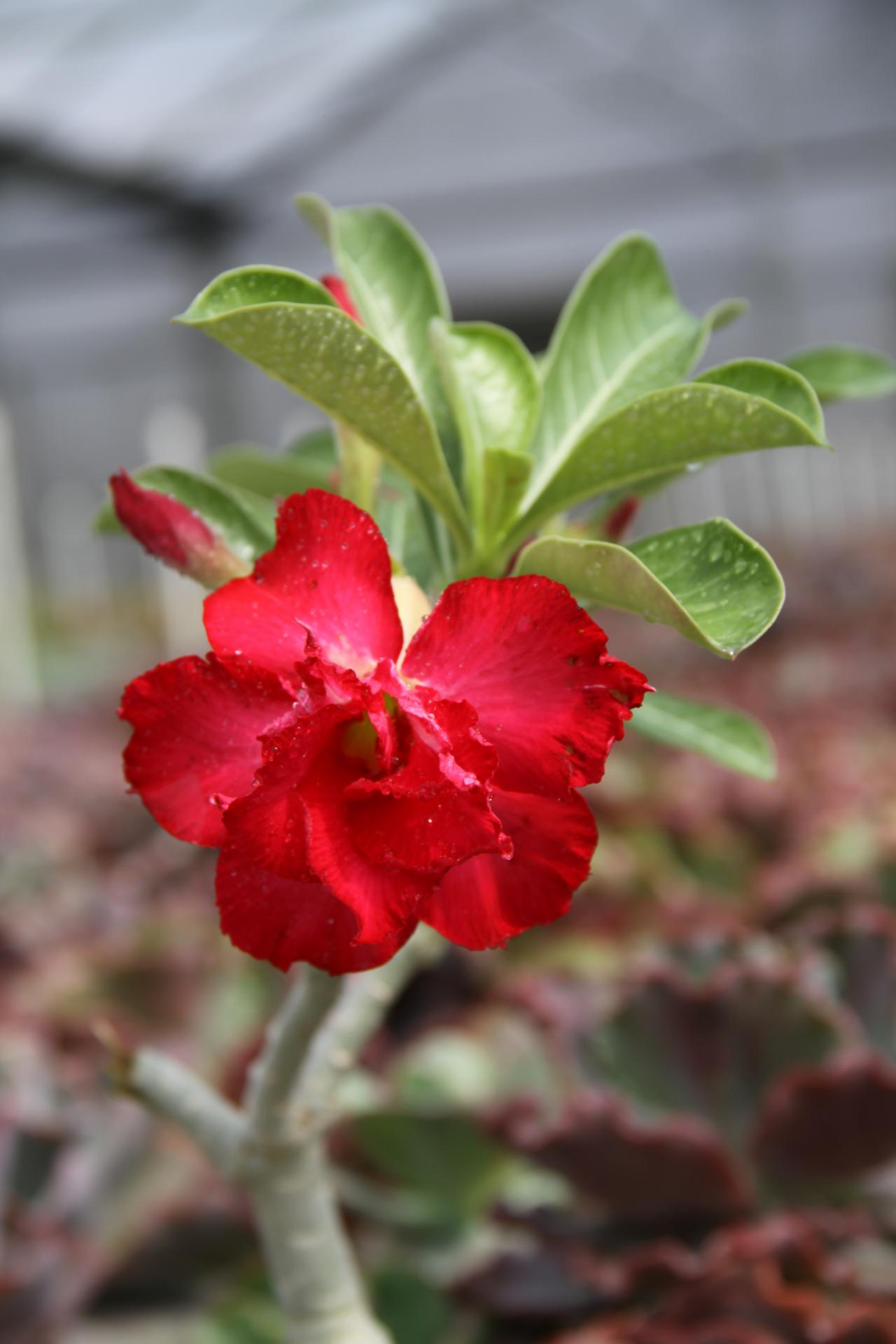
FertilizerFor an extra dose of nutrients (and potentially more flowers), you can feed your desert rose with liquid fertilizer (diluted by half) once a month during its active growth period. Do not fertilize the plant during its dormant period.
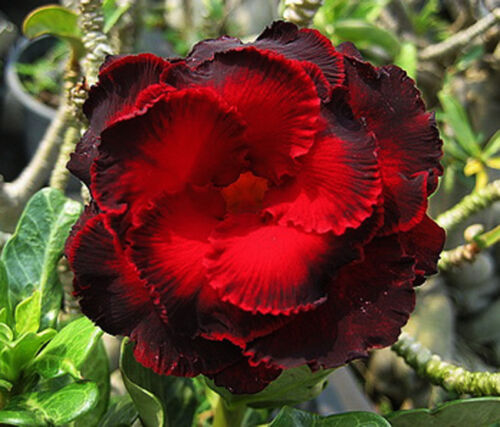
Types of Desert RoseThere are many species of Adenium. However, the most common and easiest to find is Adenium obesum. Some other subspecies include:
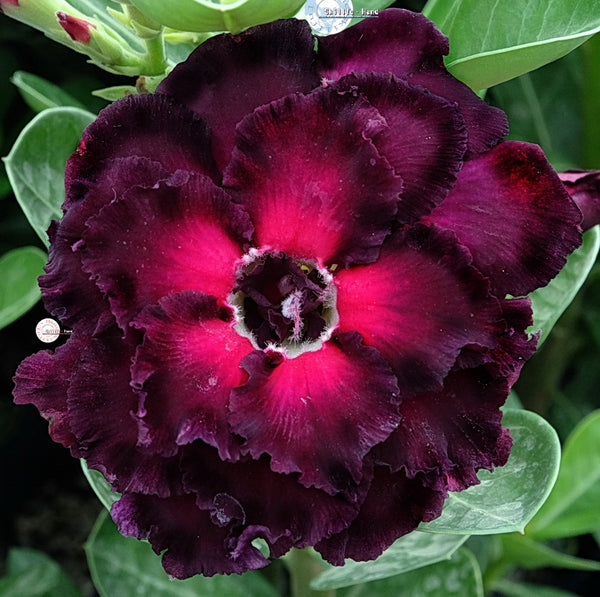
Adenium obesum subsp.oleifolium: Native to South Africa and Botswana, this species grows to 16 inches tall with a large tuberous stem, narrow olive-green leaf-like leaves, and salmon, pink or pale pink with red tubular flowers.Adenium obesum subsp. socotranum: Native to Socotra, an island in the Indian Ocean between Somalia and Yemen, this is the largest of the species, rising to 15 feet tall with an 8-foot diameter trunk. Pink flowers are up to 5 inches in diameter and appear in spring while the plant is leafless.Adenium obesum subsp. somalense: Native to East Africa, this species has narrow blade-like leaves and twisted branches. It matures at 16 feet tall with a swollen and often twisted trunk. Trumpet-shaped flowers are pink, white or red,Adenium obesum subsp. swazicum: Also known by its common name, summer impalium. This is a dwarf species that usually grows no larger than 2 feet tall; at home in Swaziland and South Africa. Beautiful flowers are pink to deep reddish pink.
